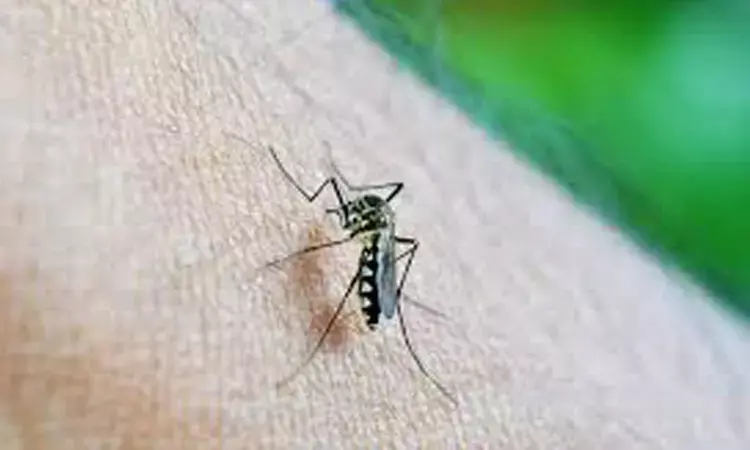- Home
- Medical news & Guidelines
- Anesthesiology
- Cardiology and CTVS
- Critical Care
- Dentistry
- Dermatology
- Diabetes and Endocrinology
- ENT
- Gastroenterology
- Medicine
- Nephrology
- Neurology
- Obstretics-Gynaecology
- Oncology
- Ophthalmology
- Orthopaedics
- Pediatrics-Neonatology
- Psychiatry
- Pulmonology
- Radiology
- Surgery
- Urology
- Laboratory Medicine
- Diet
- Nursing
- Paramedical
- Physiotherapy
- Health news
- Fact Check
- Bone Health Fact Check
- Brain Health Fact Check
- Cancer Related Fact Check
- Child Care Fact Check
- Dental and oral health fact check
- Diabetes and metabolic health fact check
- Diet and Nutrition Fact Check
- Eye and ENT Care Fact Check
- Fitness fact check
- Gut health fact check
- Heart health fact check
- Kidney health fact check
- Medical education fact check
- Men's health fact check
- Respiratory fact check
- Skin and hair care fact check
- Vaccine and Immunization fact check
- Women's health fact check
- AYUSH
- State News
- Andaman and Nicobar Islands
- Andhra Pradesh
- Arunachal Pradesh
- Assam
- Bihar
- Chandigarh
- Chattisgarh
- Dadra and Nagar Haveli
- Daman and Diu
- Delhi
- Goa
- Gujarat
- Haryana
- Himachal Pradesh
- Jammu & Kashmir
- Jharkhand
- Karnataka
- Kerala
- Ladakh
- Lakshadweep
- Madhya Pradesh
- Maharashtra
- Manipur
- Meghalaya
- Mizoram
- Nagaland
- Odisha
- Puducherry
- Punjab
- Rajasthan
- Sikkim
- Tamil Nadu
- Telangana
- Tripura
- Uttar Pradesh
- Uttrakhand
- West Bengal
- Medical Education
- Industry
New monoclonal antibody promising against malaria sans any safety concerns: NEJM

USA: L9LS, a next-generation antimalarial monoclonal antibody, when administered intravenously or subcutaneously protected recipients against malaria after controlled infection in a small trial without any safety concerns.
The study, published in the New England Journal of Medicine, provides proof of the principle that malaria prevention can be achieved with a next-generation monoclonal antibody. The researchers add that a subcutaneous regimen of a single low dose warrants further study to define its potential for limiting morbidity and mortality associated with malaria among infants and young children in regions where malaria is endemic.
Malaria is a leading cause of illness and death among infants and young children globally. Considering the need for new approaches for preventing and eliminating malaria, Richard L. Wu, and colleagues aimed to assess whether protection could be achieved with various doses of L9LS administered intravenously or subcutaneously in a phase 1 clinical trial involving healthy adults in the United States who had not previously had malaria or received a vaccine for malaria.
The participants were given L9LS either intravenously or subcutaneously at a dose of 1 mg, 5 mg, or 20 mg per kilogram of body weight. Following 2 to 6 weeks of the L9LS administration, both the participants who received L9LS and the control participants underwent controlled human malaria infection in which they were exposed to mosquitoes carrying Plasmodium falciparum (3D7 strain).
Based on the study, the researchers found the following:
· No safety concerns were identified. L9LS had an estimated half-life of 56 days, and it had dose linearity, with the highest mean (±SD) maximum serum concentration (Cmax) of 914.2±146.5 μg per milliliter observed in participants who had received 20 mg per kilogram intravenously and the lowest mean Cmax of 41.5±4.7 μg per milliliter observed in those who had received 1 mg per kilogram intravenously; the mean Cmax was 164.8±31.1 in the participants who had received 5 mg per kilogram intravenously and 68.9±22.3 in those who had received 5 mg per kilogram subcutaneously.
· A total of 17 L9LS recipients and 6 control participants underwent controlled human malaria infection.
· Of the 17 participants who received a single dose of L9LS, 88% were protected after controlled human malaria infection.
· Parasitemia did not develop in any of the participants who received 5 or 20 mg per kilogram of intravenous L9LS.
· Parasitemia developed in 1 of 5 participants who received 1 mg per kilogram intravenously, 1 of 5 participants who received 5 mg per kilogram subcutaneously, and all 6 control participants through 21 days after the controlled human malaria infection.
· Protection conferred by L9LS was seen at serum concentrations as low as 9.2 μg per milliliter.
The researchers conclude, "in this small trial, L9LS administered intravenously or subcutaneously protected recipients against malaria after controlled infection, without evident safety concerns."
Reference:
Wu RL, et al "Low-dose subcutaneous or intravenous monoclonal antibody to prevent malaria" N Engl J Med 2022; DOI: 10.1056/NEJMoa2203067.
Dr Kamal Kant Kohli-MBBS, DTCD- a chest specialist with more than 30 years of practice and a flair for writing clinical articles, Dr Kamal Kant Kohli joined Medical Dialogues as a Chief Editor of Medical News. Besides writing articles, as an editor, he proofreads and verifies all the medical content published on Medical Dialogues including those coming from journals, studies,medical conferences,guidelines etc. Email: drkohli@medicaldialogues.in. Contact no. 011-43720751


